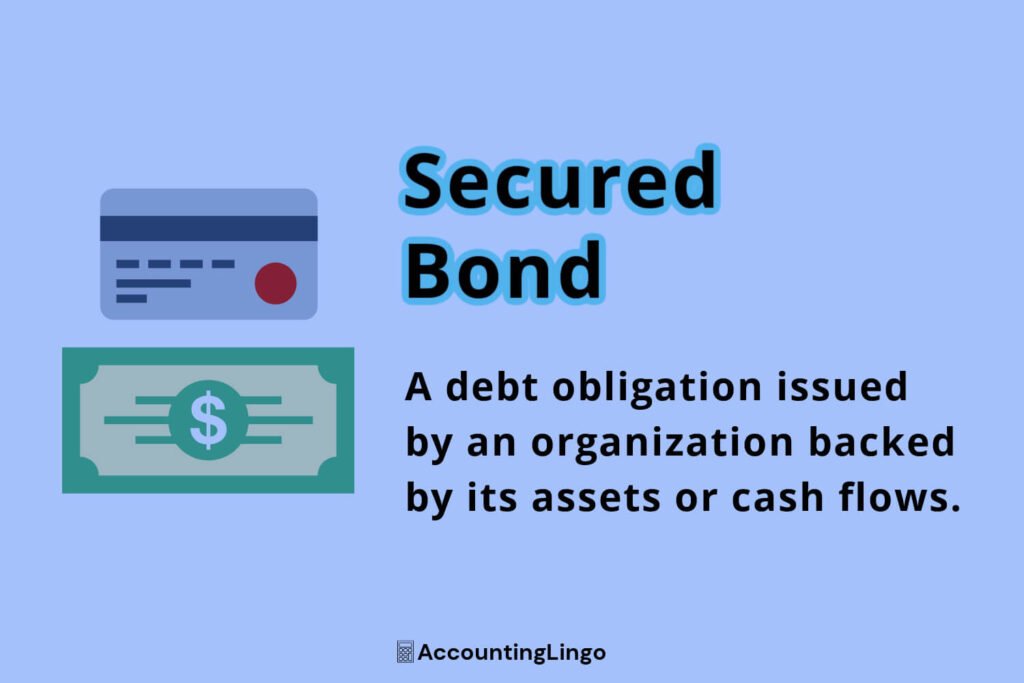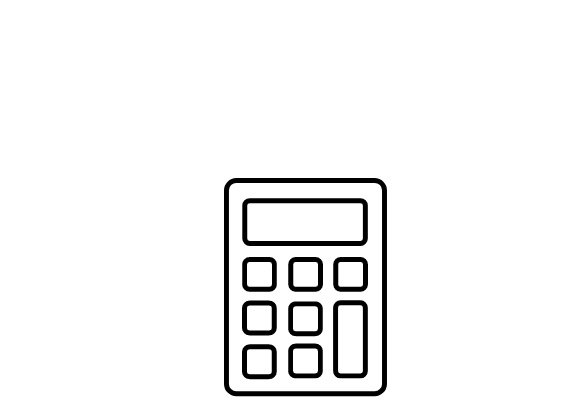
This guide will review the fundamentals of a secured bond, exploring its structure, benefits, and possible pitfalls.
We’ll explain the jargon surrounding this investment vehicle, ensuring you clearly understand the mechanics behind secured bonds.
What is a Secured Bond?
The definition of a Secured Bond includes- a debt obligation issued by an organization backed by its assets or cash flows. This means secured bonds are a type of investment vehicle that offers investors a higher level of security than other types of bonds.
There are key differences between secured bonds vs unsecured bonds. Unsecured are backed only by an issuer’s promise to repay, secured are backed by specific assets.
These specific assets guarantee the bondholders, ensuring they will recoup their principal and interest payments even if the bond issuer defaults. This collateral can be in the form of assets like real estate, equipment, or inventory, which can be sold to repay bondholders if a bond issuer does not pay as agreed.
Secured bonds are commonly offered by corporations that have valuable assets to offer as collateral. These bonds are usually considered less risky than unsecured bonds because bondholders have a claim on the collateral should the bond issuer default.
This added layer of protection makes secured bonds a more attractive investment option for risk-averse investors seeking higher levels of safety for their capital.
How a Secured Bond Works
When purchasing this type of security, you lend money to the issuer in exchange for consistent interest payments and the return of your capital at maturity. The interest rate, also known as the coupon rate, is predetermined and permanently set for the bond’s duration. The issuer will make reoccurring interest payments to bondholders based on this set rate.
In the event of default, secured bondholders have a priority claim on the collateral backing the bond. This means they have a better chance of recovering their invested funds than unsecured bondholders.
However, it’s important to state even with the added collateral backing, there is still a risk of default. Investors should carefully review the bond issuer’s creditworthiness and the quality of collateral before investing.
Advantages of Secured Bonds
Investing in this asset type offers several advantages for investors. First, the presence of collateral backing provides an additional level of security, giving investors greater peace of mind knowing that tangible assets back the bond. This additional protection makes secured bonds less risky than unsecured bonds, which rely solely on the bond issuer’s ability to repay.
Second, secured bonds commonly offer higher yields than fixed-income investments like government bonds or savings accounts. This higher yield compensates investors for the added risk. The fixed-interest payments provide a stable source of income, making this asset an attractive option for income-oriented investors.
Lastly, investing in secured bonds allows for diversification within a portfolio. By including bonds from different issuers and industries, investors can spread out their risk and reduce the impact of any potential defaults. This diversification helps to protect the overall portfolio and can enhance long-term returns.
Risks with a Secured Bond
Although offering higher security than an unsecured bond, this asset type does have risk. Investors should be aware of such risks and factor them into their overall investment framework.
A main risk includes the risk of default. While the presence of collateral backing reduces this risk, there is still a possibility the bond issuer may default on payments.
Another risk to understand is interest rate risk. As interest rates rise and fall, the value of fixed-rate bonds can also rise and fall. If interest rates increase, bond values will decrease due to investors requiring higher yields for new bonds.
Also, if interest rates decrease, existing bond values will increase as they offer higher yields than new bonds. Investors should know these risks and consider their investment time horizon and interest rate expectations before purchasing these securities.
Types of Secured Bonds
Many types of bonds are available to purchase, each with its own set of characteristics and benefits. Common types of secured bonds may include mortgage-backed securities (MBS), asset-backed securities (ABS), and collateralized debt obligations (CDOs).
Mortgage-backed securities are comprised of bonds backed by large pools of mortgage loans. The principal and interest payments from these mortgages are considered the bond’s collateral.
Asset-backed securities are similar but often secured by other types of assets, like commercial loans, home equity loans, and auto loans. Collateralized debt obligations are a specific type of Asset-backed security that consists of a diversified portfolio of debt, like corporate bonds or other cash flowing obligations.
It’s important to note- not all bonds are made available to individual investors for purchase. Some types are only made available to institutional investors, such as pension funds, insurance companies, mutual funds, etc.
Investors should carefully review the specific characteristics and risks involved with each type of secured bond before purchasing. Understanding the underlying assets that back the bonds is crucial in making an informed decison.
Evaluating a Secured Bond Before Investing
Before investing, it’s essential to conduct due diligence to better understand an issuer’s creditworthiness and the quality of their collateral. A few key factors worth considering include:
1. Credit Rating
Explore the issuer’s credit rating to better understand their ability to repay the bond. The higher their credit rating, the lower their likelihood of default risk.
2. Collateral Quality
Evaluate the quality and value of collateral backing the bond. Consider factors such as market value, liquidity, and potential risks associated with the collateral.
3. Bond Terms
Review the terms, including the coupon rate and maturity date. These terms will impact potential returns and risks associated with the investment.
4. Income Stability
Assess the issuer’s income streams’ strength and ability to generate sufficient cash flow to make interest payments.
5. Market Conditions
Consider the current economic climate and market conditions. They may affect the issuer’s ability to repay the bond. Factors like interest rates, industry trends, and regulatory changes can all affect an issuer’s creditworthiness and repayment ability.
By carefully considering these elements, investors can decide if they wish to invest and which bonds best suit them.
Steps to Invest in a Secured Bond
Investing in a secured bond involves several steps. A step-by-step guide to investing includes:
1. Determine Investment Goals
Clarify your investment goals, risk tolerance, and investment time horizon. This will help you identify secured bonds that align with your investment objectives.
2. Research & Select Bonds
Conduct thorough research on different issuers and types of secured bonds. Consider factors such as credit ratings, collateral quality, and potential returns. Select bonds that meet your investment criteria.
3. Open a Brokerage Account
If you don’t already have an account, open one with a financial institution you trust. They can supply access to the bond market and allow you to purchase and sell various securities.
4. Place an Order
Once you’ve selected the bonds you wish to purchase, place an order utilizing your brokerage account. Specify the quantity and pricing in which you’re willing to pay.
5. Monitor the Investment
After purchasing the bonds, monitor your investment regularly. Track interest payments, maturity dates, and any changes in the issuer’s credit profile. This will therefore enable you to make informed decisions as to holding or selling the bonds.
Secured Bonds vs Other Investments
When considering investment options, comparing secured bonds to other investment choices is important when determining which investment best suits your needs. Here are a few key factors to review when comparing other investment options:
Risk & Return
Assess the risk-return profile of secured bonds compared to other investments. Consider factors such as creditworthiness of the organization, potential returns, and collateral quality.
Liquidity
Evaluate the liquidity of secured bonds compared to other investments. Bonds can be less liquid than other assets, such as stocks or cash. Consider whether you need to access your investment quickly in an emergency.
Investment Horizon
Contemplate your investment time horizon and how long you wish to hold the investment. Some investments like stocks or real estate, may be better long-term options for certain investors.
Tax Implications
Evaluate the tax implications of purchasing secured bonds with other investment choices. Some investments are more tax-efficient than others, depending on jurisdiction and tax bracket.
Investors can decide which investments best suit their needs by considering all of these factors.
Secured Bonds & Diversification
Diversification is an important risk management topic, along with maximizing returns within an investment portfolio. Secured bonds can provide stability within a portfolio along with steady income.
They can also be an attractive option for risk-averse investors. Diversifying across several asset classes like stocks, bonds, and cash allows investors to spread out risk.
Secured bonds may act as a counterbalance amongst more volatile investments, like stocks. When stocks perform poorly, secured bonds may be able to cushion the impact and provide a more stable source of income. Additionally, fixed-interest payments may help offset losses from other investments.
Investors should clearly understand their risk tolerance, investment goals, and time horizon when determining an appropriate amount of secured bonds within their portfolio. Seeking the guidance of a financial professional can help ensure one’s portfolio is appropriately balanced and aligned based on individual goals and objectives.
Conclusion
Secured bonds can offer investors a higher level of security than many other asset types. The additional collateral backing they provide supplies investors with another level of protection not commonly present in other asset classes.
However, it’s important to remember all investments contain a degree of risk. Invest accordingly!
Additional Resources
Other helpful articles may include:
